Kitchen Faucet Guide
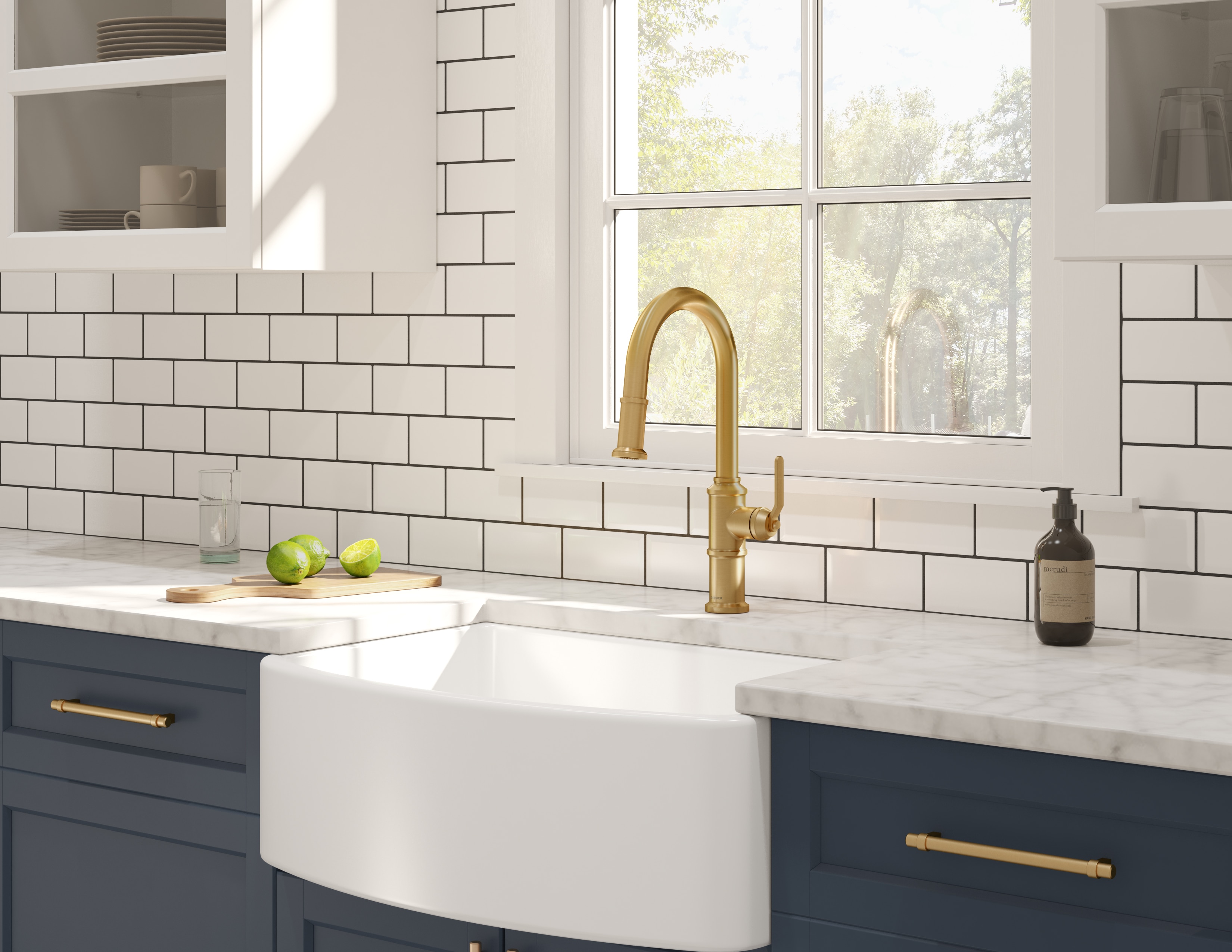
If you’ve been interested in DIY projects and trying to learn how to replace a kitchen faucet, you’ll soon realize there are many things to consider. Kitchen faucets come in lots of sizes, styles, and features that can make any DIY project appear challenging. Luckily, Gerber has been making kitchen faucets for over 90 years and has some simple questions to ask yourself to help pick the best faucet based on your current kitchen, budget, and preferences.
How Many Holes Does a Kitchen Faucet Need?
A few of the things you’ll need to consider starting out is how many holes does your countertop have, and are you willing to either drill holes or wanting to cover extra holes? A faucet with an integrated single handle requires one hole and a faucet with two separate handles usually requires three holes. Any extra features, such as a side sprayer, water dispenser, or soap dispenser, require additional holes. However, if you have extra holes in either your drop-in sink or your countertop, Gerber offers a variety of stylish cover plate options to cover the unused holes.
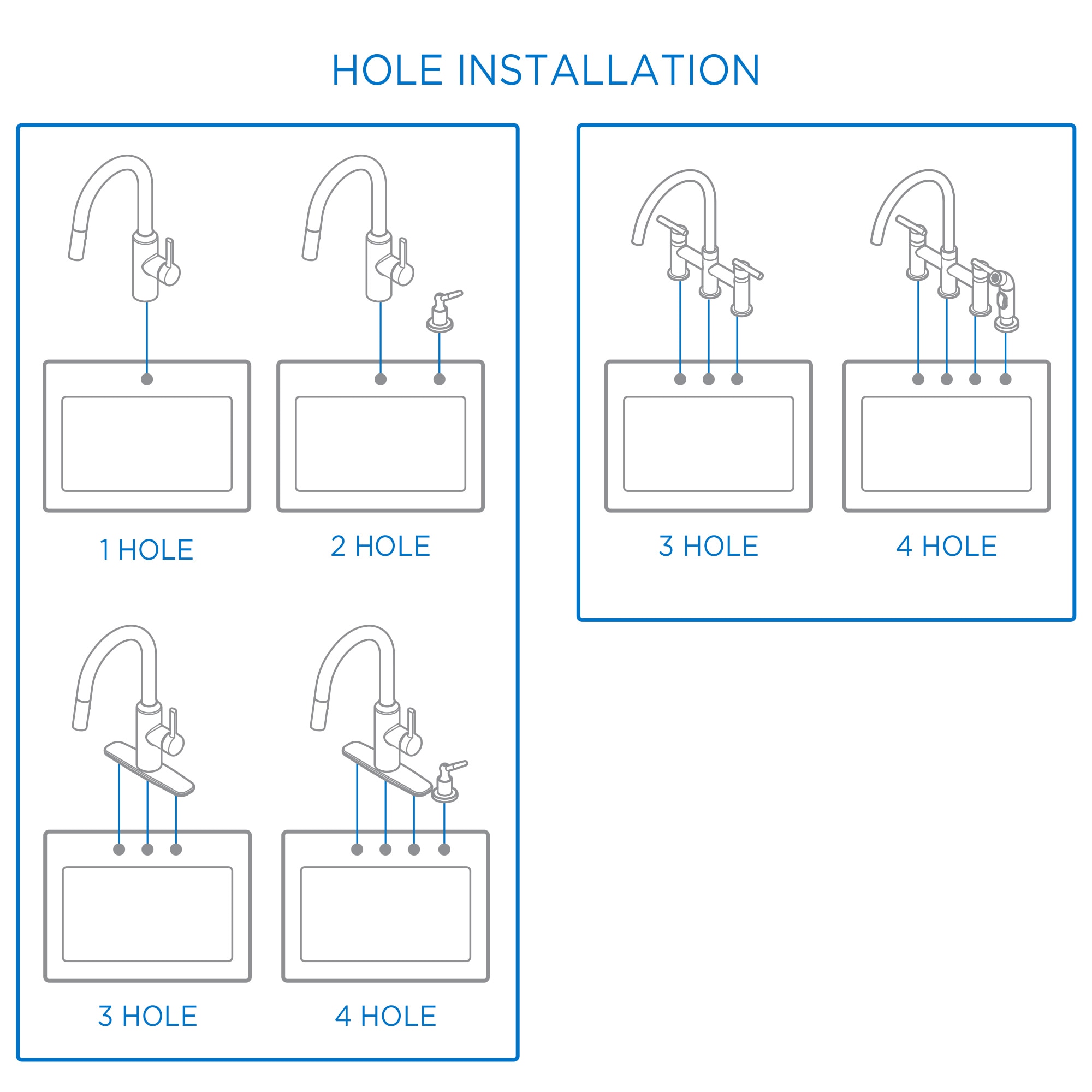
Is a Pull-Down or Pull-Out Faucet Better?
Pull-out faucets are generally shorter than pull-down faucet models, making them ideal if your kitchen cabinets are above the sink. Another benefit of this kind of faucet is that it has a larger sprayhead, so there is a larger spraying surface. Pull-down faucets are typically taller, making washing and rinsing easier due to more clearance under the sprayhead.
Sprayers can be installed separately to one side of the spout or they can be integrated into the spout. This is called either a pull-out sprayhead design or a pull-down sprayhead design. An integrated sprayer offers convenience and functionality. Pull-out and pull-down kitchen faucets provide all the functionality of a sprayer in a more simplified form, and are easier to install, maintain, and use.
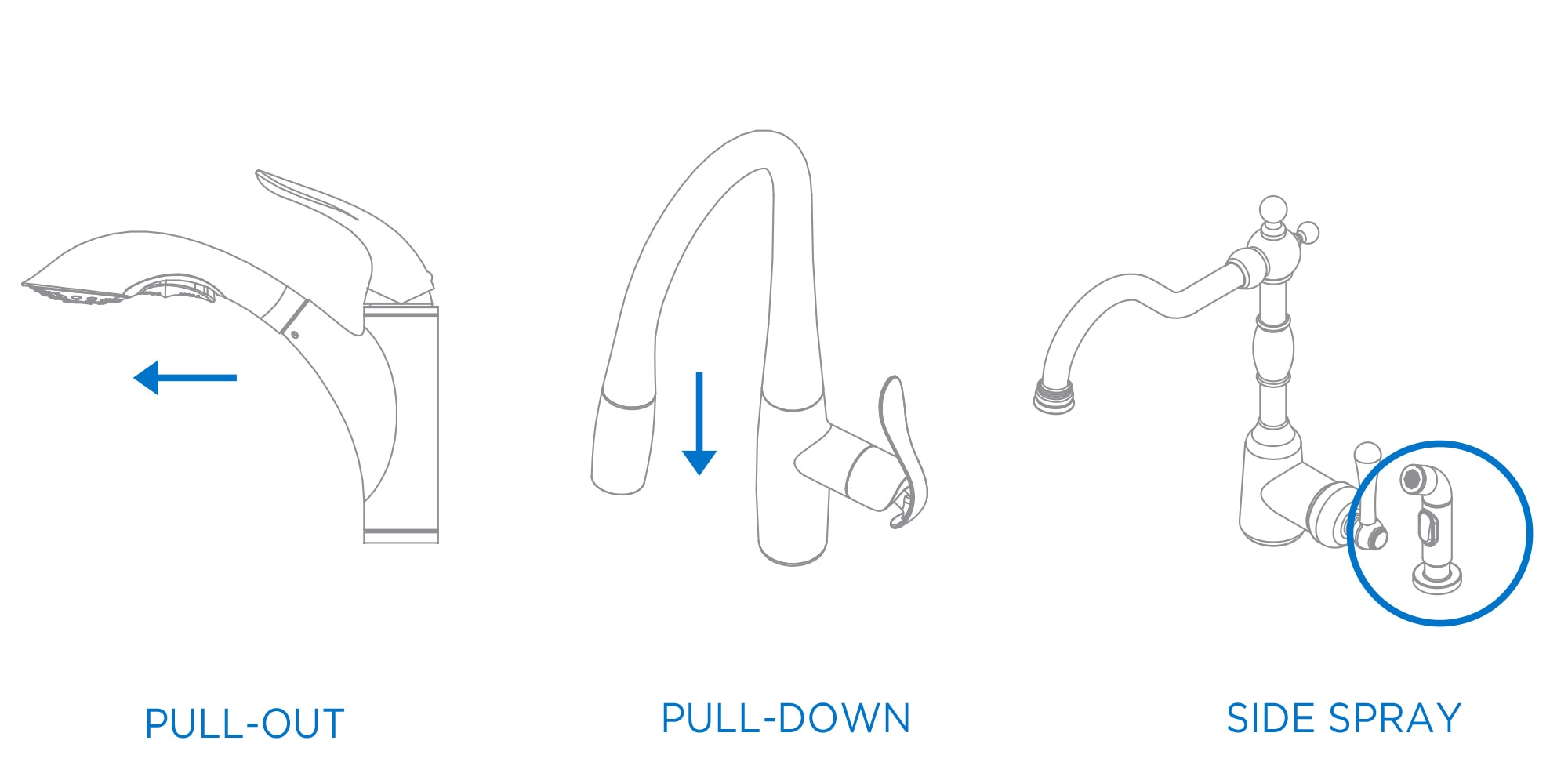
What is the Difference Between Spout Height and Faucet Height?
At Gerber, you may hear the terms ‘Spout Height’ and ‘Faucet Height’ used interchangeably. Spout height measures the length from the point of connection on the counter or sink (deck) to the top of the faucet. The higher the spout, the easier it is to fit tall pots under for filling or cleaning. A spout that is tall makes it easier to wash tall pots. If you've placed your sink on a high shelf, or have cabinetry beneath, choosing a faucet that is shorter in height may help you better reach water at either end of the sink.
What is the Ideal Spout Reach?
Spout reach measures the horizontal distance from the center of the spout opening to the center of the spout base. To find the most appropriate spout reach for your sink, measure from the faucet's mounting holes to the center of the drain. If you are installing a closer offset faucet, this will ensure that you will still have a sufficient reach and be able to use it for handwashing. This is an important consideration for faucet and sink compatibility.
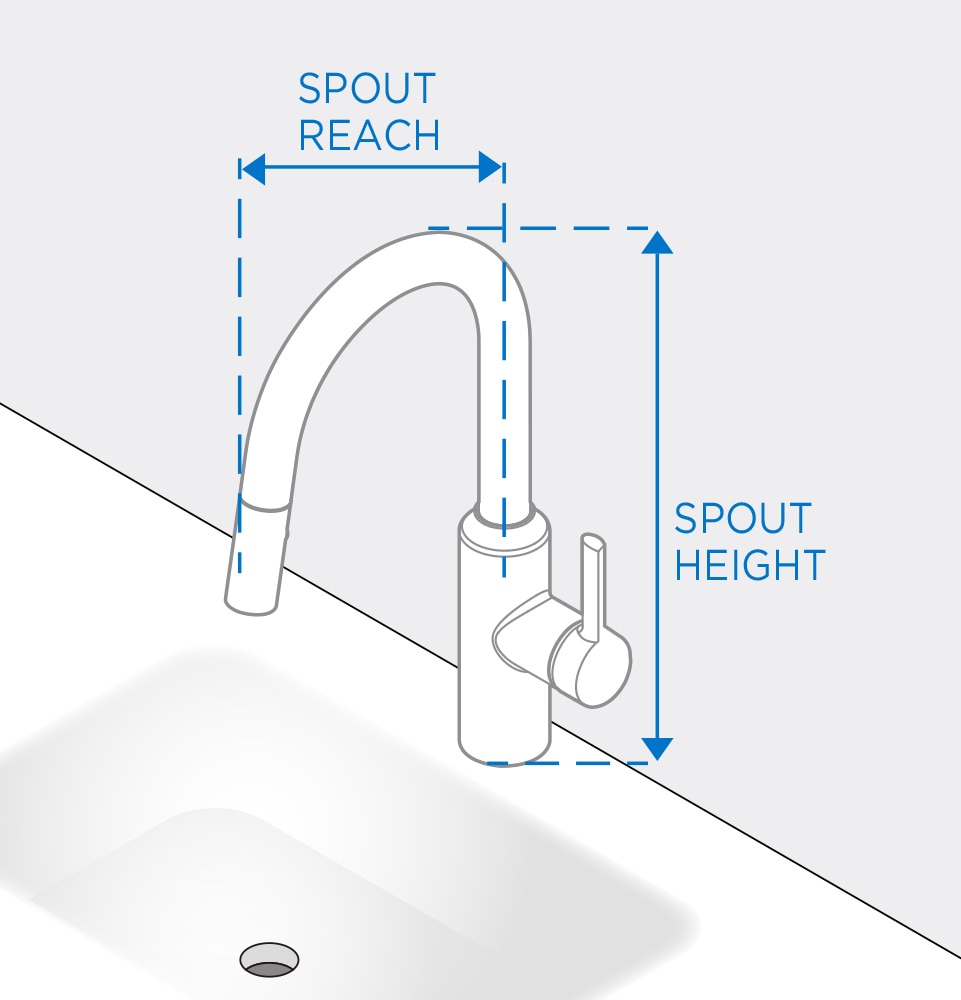
What are ADA Compliant Kitchen Faucets?
To be labeled as ADA compliant, faucets must be operable with one hand without tight grasping or twisting, and able to be activated using a maximum of five pounds of force. This will help make it simple for people with any physical limitations to operate faucets and is a great option to have in every kitchen. Nearly all Gerber faucets are ADA compliant based on faucet operation.
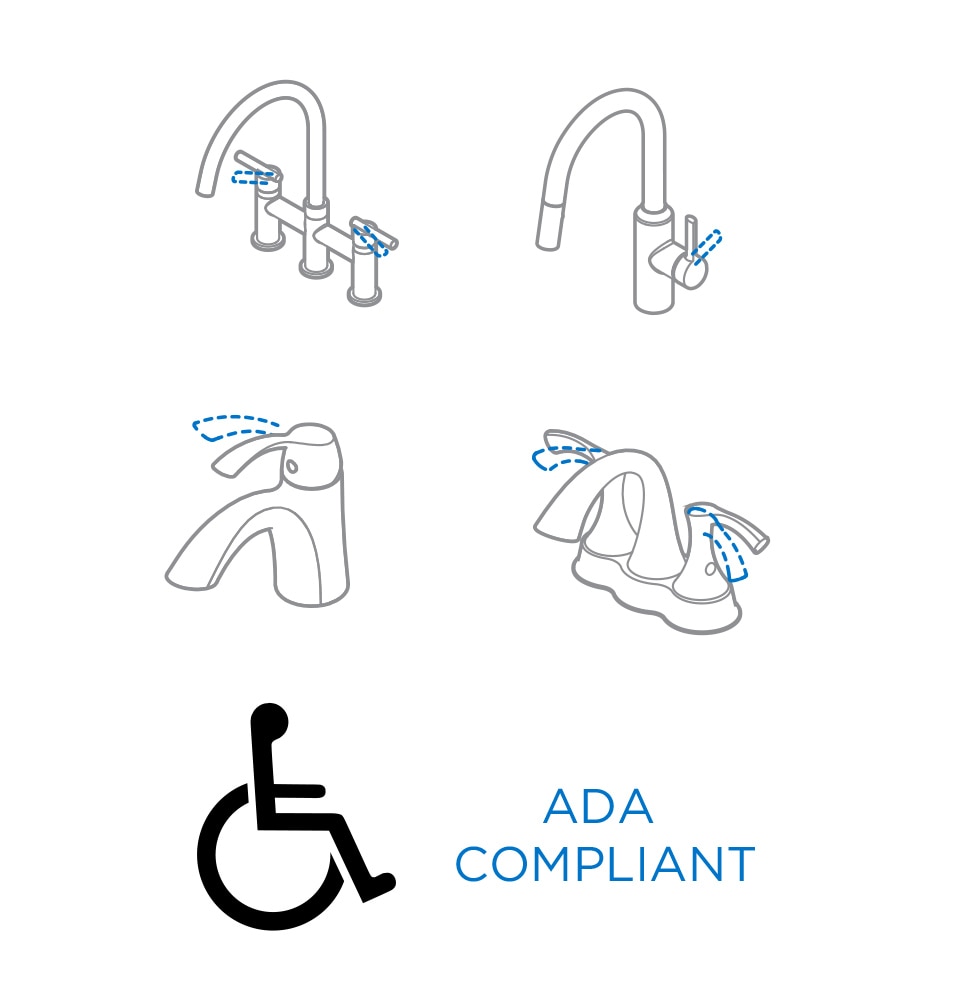
Are Single Handle or 2 Handle Faucets Better?
Single handle faucets usually require only one or two holes in the countertop and are convenient if you often find yourself with only one hand free. A smaller sink basin or limited counter space can call for a single handle faucet. However, they may not allow quite as precise temperature adjustments as two handle faucets. A two handle faucet will have a wider spread and is more suited for a kitchen sink with a little more space. Additionally, the traditional setup of a two handle faucet has separate hot and cold handles, allowing for better temperature control, but requiring both hands to adjust the temperature at the same time. Two handle faucets usually require three or four holes.
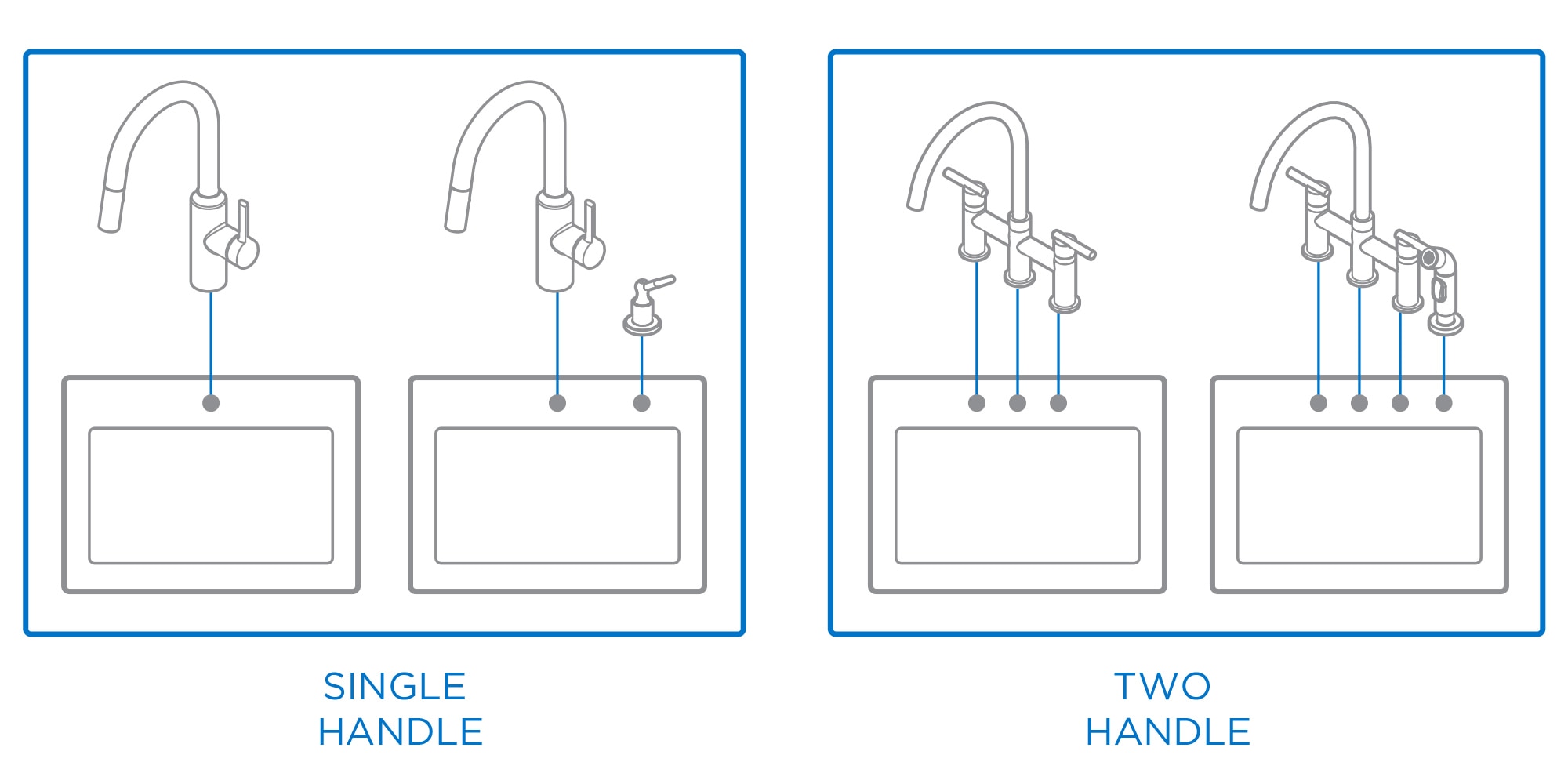
What Kind of Kitchen Faucets are in Style?
Faucet style is completely up to the owner, but it helps to have a basic idea of what you are looking for in order to optimize the design of your kitchen space. Traditional faucets like Opulence® feature classic design with curved surfaces and charming details. Contemporary faucets like Parma® are sleek and simple, with more defined lines. Transitional faucets like Kinzie® blend the best of both worlds by combining classic and contemporary elements for a look that complements a variety of styles.
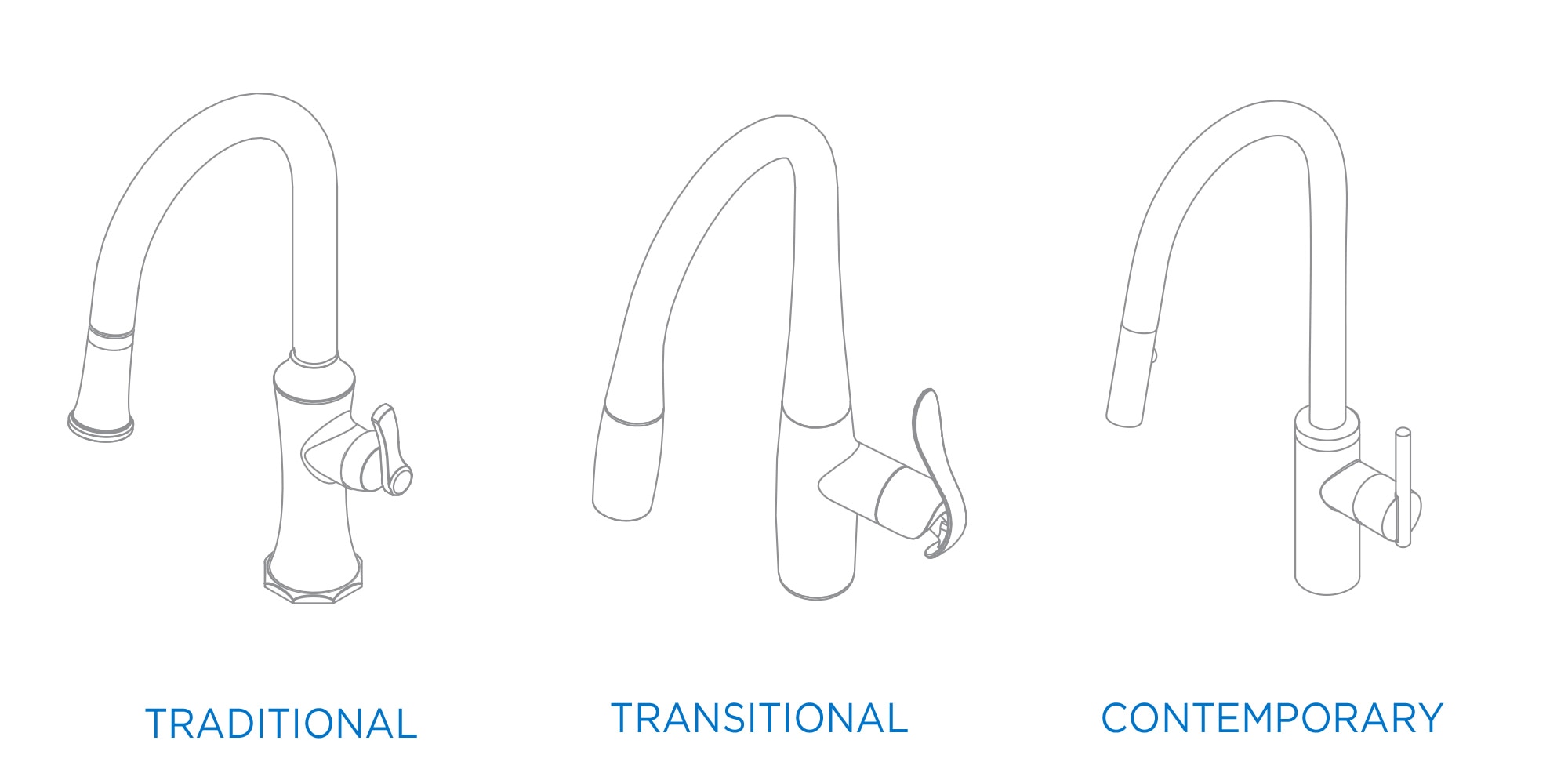
Which Finish is Best for a Kitchen Faucet?
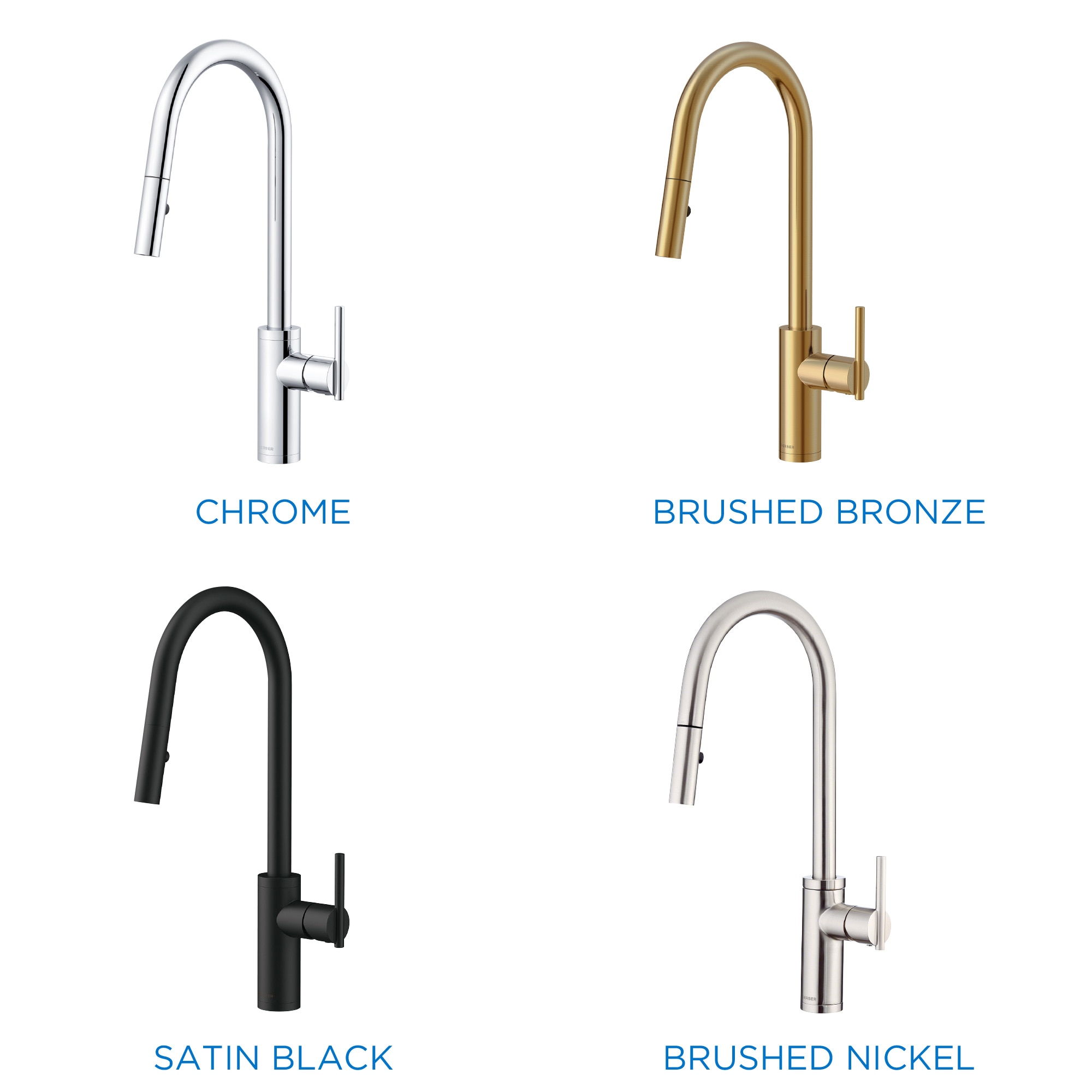
Gerber offers kitchen faucets in Chrome, Stainless Steel, Satin Black, and Brushed Bronze finishes to fit any style. Stainless Steel finishes tend to be the most popular choice for many kitchens as they stand out, are durable and easy to clean, and easily match other fixtures and appliances throughout your kitchen. For a unified look, match your cabinet hardware and other fixtures with your faucet finish. Or to make your faucet the star of the show, choose a different finish than other elements in the room for a stand-out statement piece.